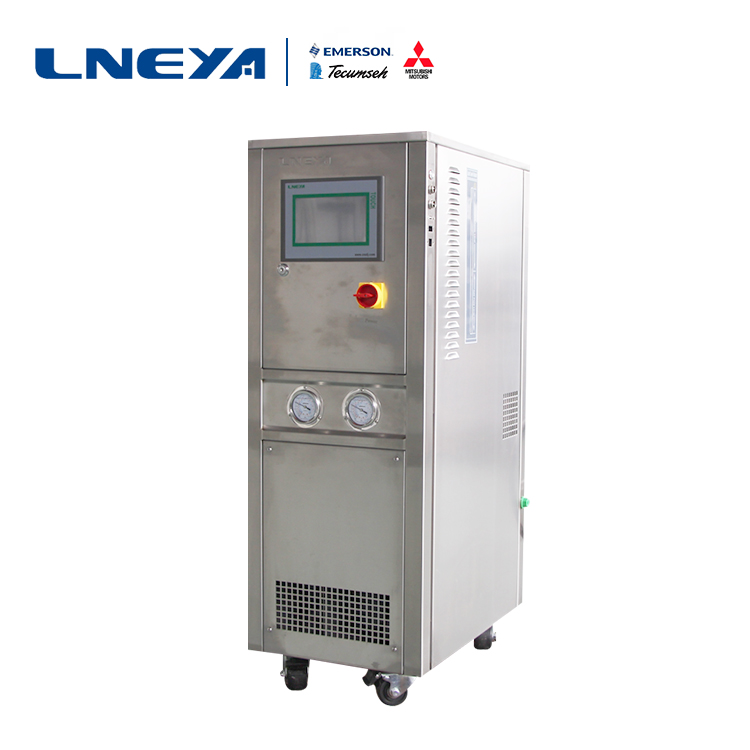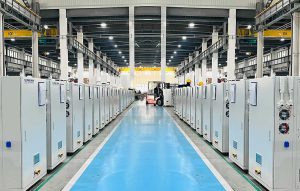Description of refrigeration principle in semiconductor wafer temperature control
In the operation of the semiconductor wafer temperature control refrigeration system, a state transition of a certain working fluid is used, and the necessary heat Q0 is extracted from the heat source of a lower temperature, and the heat Qk is sent to the heat source of the tropical heat through a storage process of the consumption power W. In this process, Qk = Q0 + W is taken from the conservation of energy.
In order to achieve temperature control of semiconductor wafer temperature migration, a process of lowering the temperature of the refrigerant to a lower temperature environment is forcibly performed, and heat is continuously extracted from the object to be cooled, and this is achieved within the boundary of the refrigeration technique. The process has several basic steps: phase change refrigeration: the use of liquid evaporation at low temperatures or the dissolution or sublimation of solids at low temperatures to extract heat from the object being cooled. Normal air conditioners are all such cooling steps. Gas expansion refrigeration: The high pressure gas can reach a lower temperature after adiabatic expansion, so that the low pressure gas can be reheated to cool. Gas eddy current refrigeration: After the high pressure gas is expanded by the vortex tube, it can be respectively hot and cold air flow, and can be cooled by the reheating process of the cool air flow. Thermoelectric cooling: The direct current is passed through the semiconductor thermopile, which can have a cold effect at one end and a thermal effect at the other end.

The temperature of the semiconductor wafer is controlled during operation. At the high temperature, no heat transfer medium evaporates, and it can be realized without pressure. -80 to 190 degrees, -70 to 220 degrees, -88 to 170 degrees, -55 to 250. Degree, -30 ~ 300 degrees continuous temperature control. The principle and function of semiconductor wafer temperature control have many advantages for the user: Because only the heat transfer medium in the expansion chamber is in contact with the oxygen in the air (and the temperature of the expansion tank is between normal temperature and 60 degrees), the reduction can be achieved. The heat transfer medium is oxidized and absorbs moisture in the air.
In the semiconductor wafer temperature control, the principle of refrigeration is as shown above. When the user controls the temperature control of the semiconductor wafer, the user should pay attention to the principle of refrigeration, and better operate the semiconductor wafer temperature control after understanding.
Related recommendations
-
What are the effects of oil level and oil difference in low temperature chillers?
1800LNEYA tells you that in addition to the refrigeration system, the lubricating oil system is also an important part, with its own oil storage and special oil cooler. Oil level It refers to the level of the lubricant in the oil storage container. Th...
View details -
Why do electrical companies need cooling system industrial chillers?
1743When electrical equipment is operating outdoors, it may encounter high temperature environments. For example, in direct sunlight in the summer, the temperature may be very high. If the equipment overheats, it will affect performance or even ...
View details -
Recrystallization temperature and influencing factors?
1318Recrystallization is the process of recrystallizing crystals from a solution or melt after they are dissolved in a solvent or melted. Recrystallization can purify impure substances or separate mixed salts from each other. Among them it is the r...
View details -
Application of Screw Water Chiller
1354The power of screw water chiller is relatively larger than that of scroll chiller. It is mainly used in central air conditioning system or large industrial refrigeration. It can be divided into two categories. 1.Twin-screw refrigeration compressor...
View details
 LNEYA Industrial Chillers Manufacturer Supplier
LNEYA Industrial Chillers Manufacturer Supplier












